Running a business blog isn’t just about ticking off a box in your marketing plan; it’s about showing up with something useful to say. It gives your brand a voice, a platform, and a way to connect with the people you want to reach. Done right, it builds trust, improves your visibility, and turns casual browsers into loyal customers.
But not all blogs are created equal. Some quietly do the work week after week, while others fall flat before the second post goes live. What makes the difference? The details. From structure and style to strategy and staying power, the most effective business blogs have a few key ingredients in common.
In this guide, we’ll unpack the essentials; what elements of a successful business blog your blog actually needs to stand out and serve its purpose. Think of it as a practical checklist, with a few thoughtful touches to keep things human.
To make it easy to navigate, I have listed the 14 elements of a successful business blog below. You can click their name to jump straight to that section, or simply scroll to read the whole guide in full (preferred).
- Clear brand voice and tone
- Defined audience and buyer personas
- Strategic keyword integration
- Value-packed content with clear takeaways
- Compelling headlines and meta descriptions
- Internal and external linking strategy
- Strong visual elements
- Clear calls-to-action (CTAs)
- Optimised for mobile and readability
- Regular content updates and publishing calendar
- An RSS feed
- An email subscribe form
- Easy to find social sharing buttons
- Regularly refreshed existing posts
OK, so let’s now get into the details of each of the elements of a successful business blog!

Clear brand voice and tone
Your business blog isn’t just a collection of articles; it’s a reflection of your brand’s personality. That means how you write matters just as much as what you write.
Whether your style leans more buttoned-up and corporate or casual with a dash of cheek, consistency is key. It helps readers feel like they know you, and more importantly, that they can trust you.
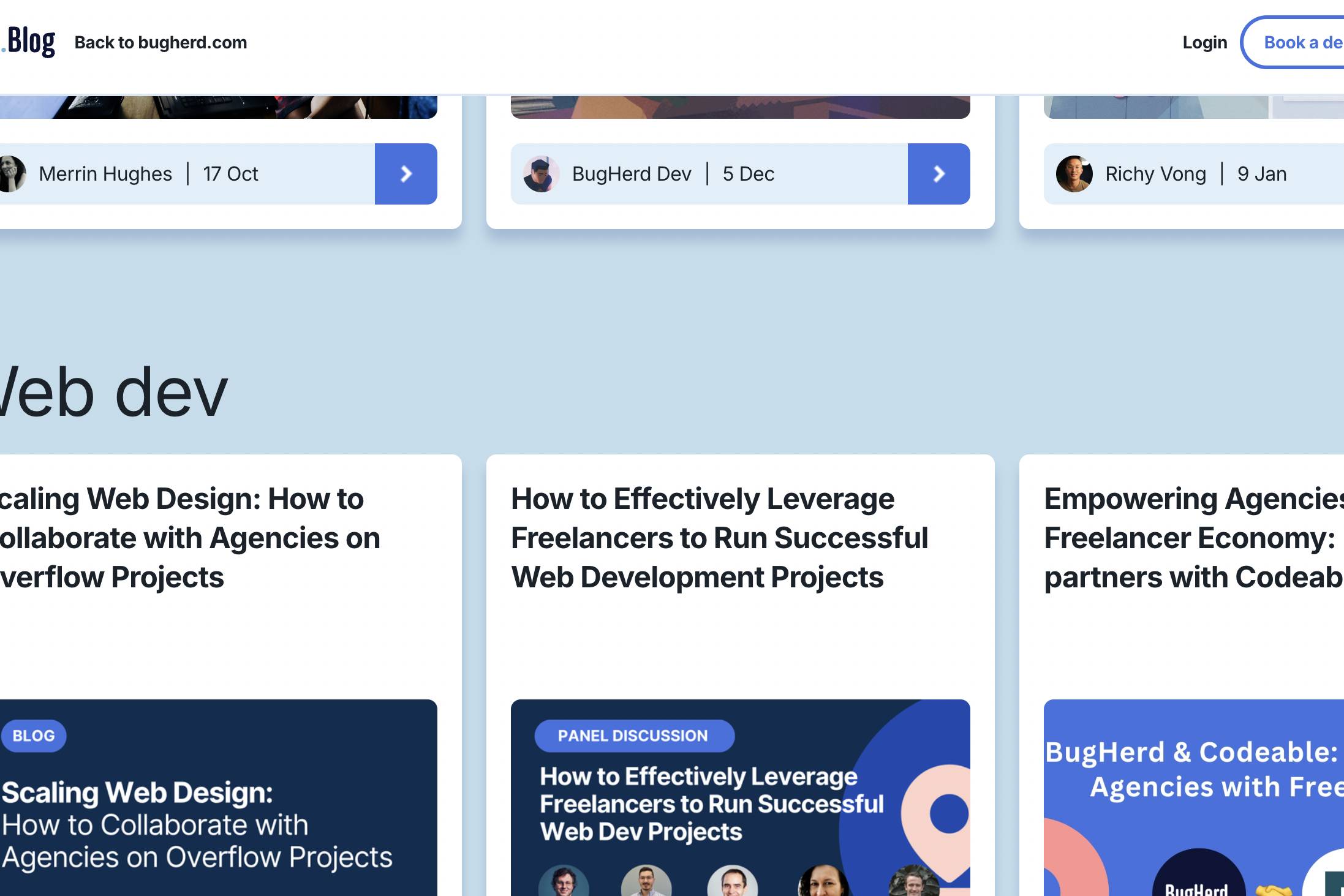
To get there, start by defining your tone: is it warm and helpful, bold and assertive, or somewhere in between? Use that tone in every post; from your headlines to your sign-offs.
Over time, your audience will recognise your voice even before they see your logo. It’s like hearing a friend’s laugh in a crowded room; you just know it’s them.

Defined audience and buyer personas
Before you put pen to paper (or fingers to keyboard), you need to know who you’re writing for. A successful business blog isn’t a personal journal; it’s a chance to speak directly to the people who matter most to your business. That could be busy professionals, curious newcomers, or long-time customers looking for fresh insight.
Creating a clear picture of your ideal reader or ideal customer persona helps shape everything; what topics you cover, the language you use, and even the length of your posts. Are they skimming during their lunch break, or digging in for a detailed read on the weekend? What problems are they trying to solve? What questions do they keep asking?
Building out buyer personas might sound a little formal, but it’s really just about understanding people. Give each persona a name, jot down their goals, challenges, and what they care about. Once you’ve done that, your blog becomes a tool that speaks directly to their needs; instead of just tossing content into the void and hoping it sticks.

Strategic keyword integration
If you want your business blog to actually show up when people are searching online, you need to speak their language; and that starts with keywords. But this isn’t about stuffing a bunch of buzzwords into your posts. It’s about weaving in the terms your audience is already using when they’re looking for answers.
Start by thinking about what someone might type into Google if they needed what you offer. Then build your post around those phrases in a way that feels natural. Use them in your headlines, subheadings, and throughout the content; but only where it makes sense. If it reads awkwardly, it’s not helping anyone (and search engines are smart enough to notice).
The goal isn’t to trick the algorithm; it’s to be found by the right people at the right time. Using good keywords are a bridge between what your readers need and what your business offers, and optimise each blog post.

Value-packed content with clear takeaways
At the heart of any successful business blog is content that actually helps people. Not just filler, but posts that answer real questions, solve common problems, or offer a fresh perspective.
When readers come away with something useful; whether it’s a new idea, a simple how-to, or even a good laugh; they’re more likely to stick around, share your post, and come back for more.
Think about what your audience truly cares about. What do they ask you about again and again? What’s been confusing, frustrating, or hard to figure out? Turn those pain points into helpful, easy-to-follow blog topic ideas and content. And don’t bury the good stuff; make your takeaways clear and actionable, so readers don’t have to hunt for them.
Whether it’s a checklist, a how-to guide, or a quick list of dos and don’ts, your blog should feel like a resource they can count on; not a sales pitch in disguise.

Compelling headlines and meta descriptions
Before anyone even clicks on your blog post, they’ve made a snap judgement based on the headline and the little snippet that shows up in search results. That’s your moment to stand out.
A strong headline grabs attention and gives people a reason to stop scrolling. It doesn’t need to be flashy or over the top; it just needs to be clear, specific, and true to what the post delivers.
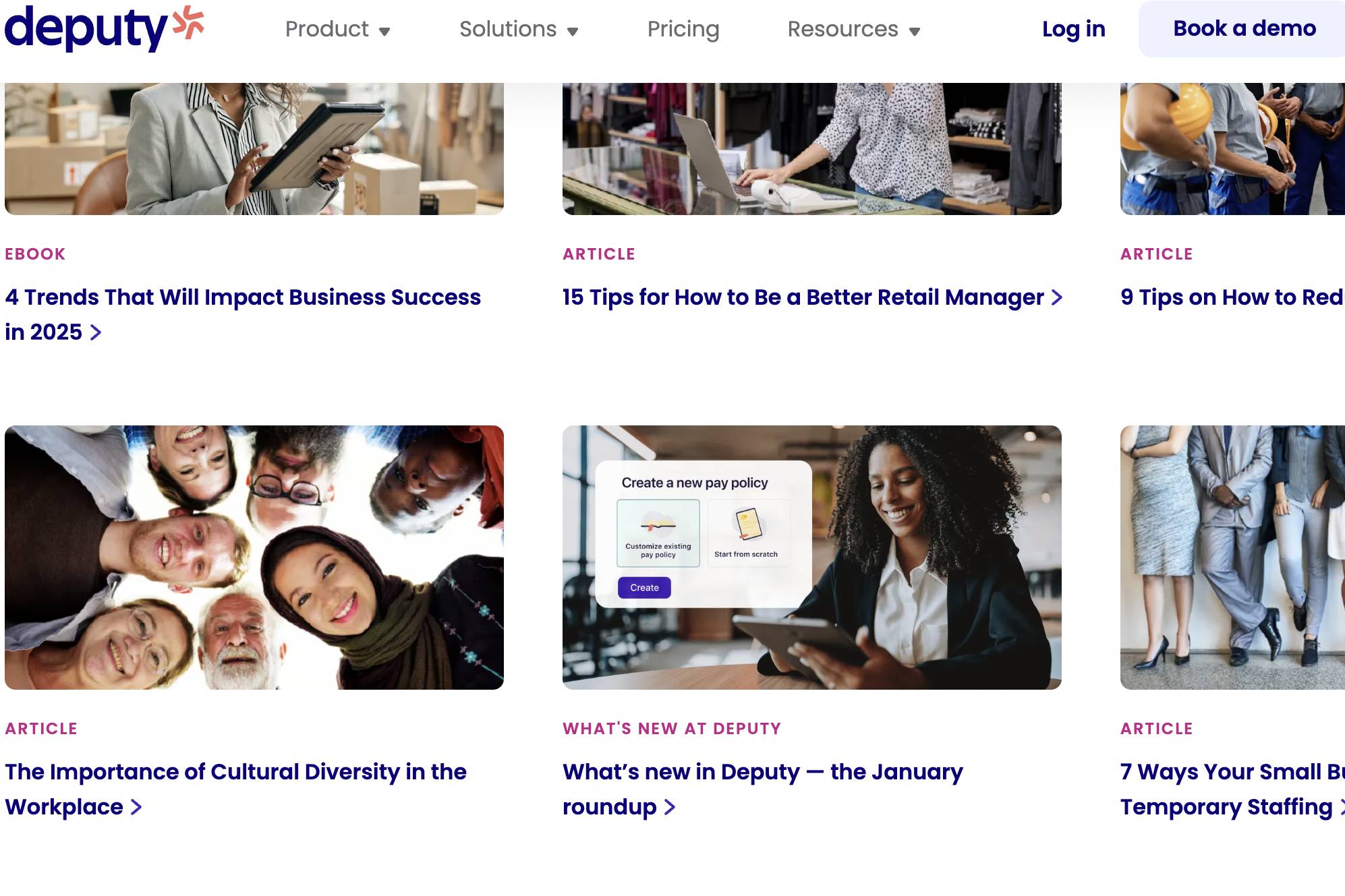
The same goes for your meta description (the short summary you often see under a link on Google). Think of it as your blog’s elevator pitch.
It’s your chance to explain, in one or two sentences, what’s in it for the reader. Keep it honest, avoid filler, and focus on the benefit they’ll get by clicking through.
When done right, these small bits of copy can make a big difference in how visible your content is; and how eager readers are to dive in.

Internal and external linking strategy
Another one of the elements of a successful business blog is links. Now, links might not seem like the flashiest part of your blog, but they quietly do a lot of heavy lifting. Internal links; those that point to other pages or posts on your own site; help readers explore more of your content and keep them engaged longer.
External links; to helpful resources or credible sources; can build trust and show that you’ve done your homework.
The trick is to keep things relevant and intentional. If you’ve written a post that touches on a topic you’ve covered before, link to it with a short, natural phrase that tells the reader what they’ll find. The same goes for linking out; only do it when it genuinely adds value, and stick to trustworthy sources.
Aside from helping readers, a solid linking strategy gives search engines a clearer picture of your site’s structure. Think of it as building good paths through your content, so people (and Google) don’t get lost, and helps you build backlinks to your blog.

Strong visual elements
Let’s be honest; blocks of text on their own can feel a bit heavy. Adding visual elements like images, diagrams, or even a simple chart can make your blog easier to read and more engaging from the first glance.
A well-placed photo or graphic are important elements of a successful business blog, and can really help to reinforce your message, break up longer sections, and help readers absorb the information faster.
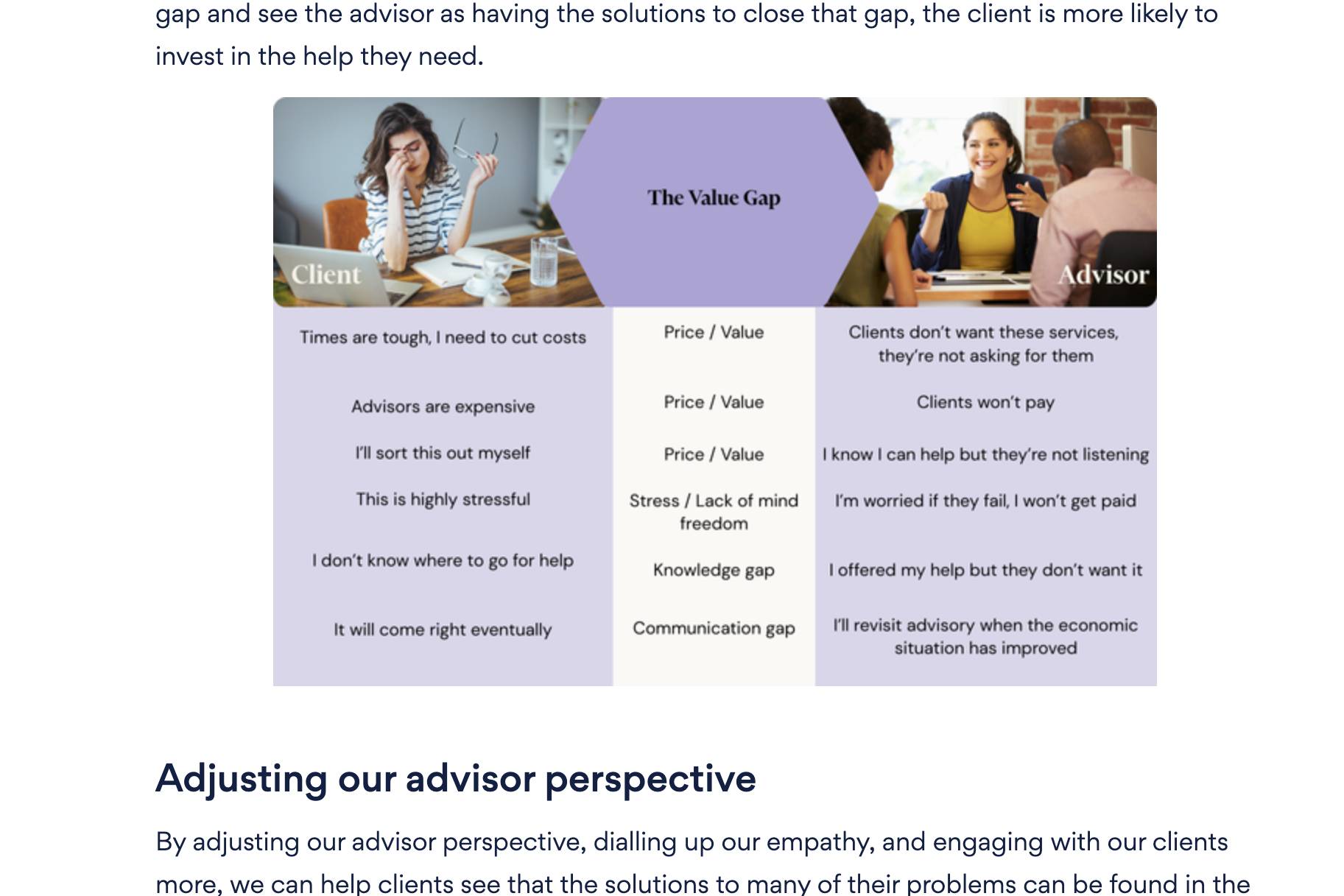
You don’t need a design team or a big budget to make it work. Even clean, simple visuals; like a branded header image or a quick hand-drawn sketch; can go a long way. Just make sure everything you include supports the content rather than distracting from it.
And don’t forget the details: give your images descriptive file names, keep sizes manageable so your page loads quickly, and always add alt text for accessibility. It’s a small step that makes a big difference; for your audience and your search ranking.

Clear calls-to-action (CTAs)
Every blog post should have a purpose, and a strong call-to-action is how you guide readers toward it. Whether you want them to sign up for a newsletter, check out a product, book a consultation, or even just leave a comment, don’t leave it to chance; ask clearly and confidently.
Your CTA doesn’t have to be pushy. In fact, the best ones feel like a natural next step. If your post solves a problem or answers a key question, your CTA is simply the “what now?” moment.
Keep it short, make it specific, and tie it back to the value you just delivered. “Start your free trial,” “Download the guide,” or even “Let us know what you think”; they’re all little nudges that turn readers into participants.
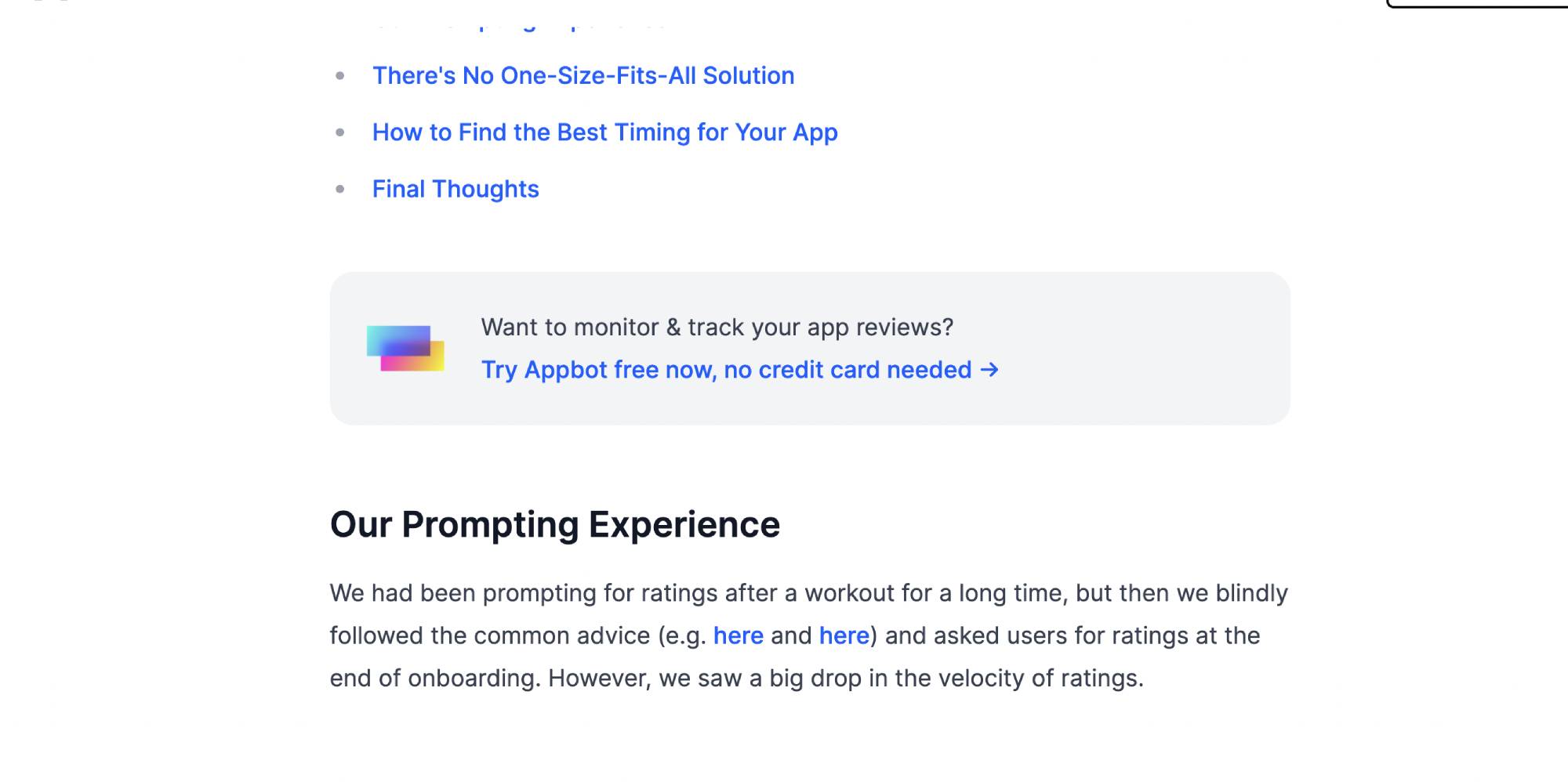
A well-placed CTA (Call to action) help your blog work smarter, not harder. One post can inspire action, build relationships, and keep your audience moving forward; all with a few well-chosen words.

Optimised for mobile and readability
Most people aren’t reading your blog on a big screen at a desk; they’re scrolling on their phones while waiting for coffee or riding the train. That means your content needs to look good and be easy to read no matter the screen size.
Keep paragraphs short and to the point. Break things up with subheadings, bullet points, and plenty of white space. Use fonts that are easy on the eyes and make sure buttons and links are tap-friendly; not squeezed into awkward spots. Even the best post can lose people fast if it feels like work to get through.
It’s also worth previewing your blog on different devices. What looks great on a laptop might feel cramped on a phone.
Making those small tweaks can mean the difference between a quick bounce and a reader who sticks around. This is definitely one of the elements of a successful business blog that can make or break a blog.

Regular content updates and a publishing calendar
A blog that goes quiet for months can give off the wrong impression; even if you’ve just been busy with other things.
Regular posting shows that your business is active, tuned in, and invested in sharing helpful ideas. It doesn’t mean you need to churn out content every day, but a steady rhythm (even monthly) helps build trust and keeps your blog from gathering dust.
That’s where a simple publishing calendar comes in handy. Planning ahead saves time, keeps your ideas organised, and makes it easier to stick to a schedule. It also helps you mix things up; like balancing how-to guides with case studies or timely industry updates. You don’t need fancy tools to do it either; a shared spreadsheet or a Notion board can work wonders.
Staying consistent isn’t just good for your readers; it keeps your ideas flowing and your content engine ticking along. Over time, it turns your blog into a go-to resource people look forward to coming back to.

An RSS feed
An RSS feed might feel a bit old-school, but don’t let the acronym fool you; it’s still one of the elements of a successful business blog, and a handy tool for keeping your readers in the loop.
RSS (short for “Really Simple Syndication”) allows people to subscribe to your blog and get new posts delivered straight to their feed reader or inbox, no extra effort required.
The beauty of it? Once someone’s subscribed, they won’t miss a thing. They don’t need to remember to check your site or rely on social media algorithms to bump your post into their feed. It’s a direct, reliable connection to your most engaged audience.
For businesses, that means more consistent readership, stronger relationships, and another small but mighty way to build trust. It also plays nicely with newsletter tools and content aggregators, helping your content go further without any extra legwork.
In short, an RSS feed quietly keeps your blog working in the background; steady, dependable, and always on.

An email subscribe form
Your blog might be full of great content, but if readers drop by once and never return, you’re missing an opportunity. An email subscribe form gives people an easy way to stay connected; and gives you a direct line to folks who actually want to hear from you, by building an email list.
Instead of leaving things to chance (or hoping an algorithm plays nice), email puts you in control. When someone joins your list, you know they’re interested. And when you send out a new post, a tip, or a special offer, it goes straight to their inbox; no middleman, no noise.
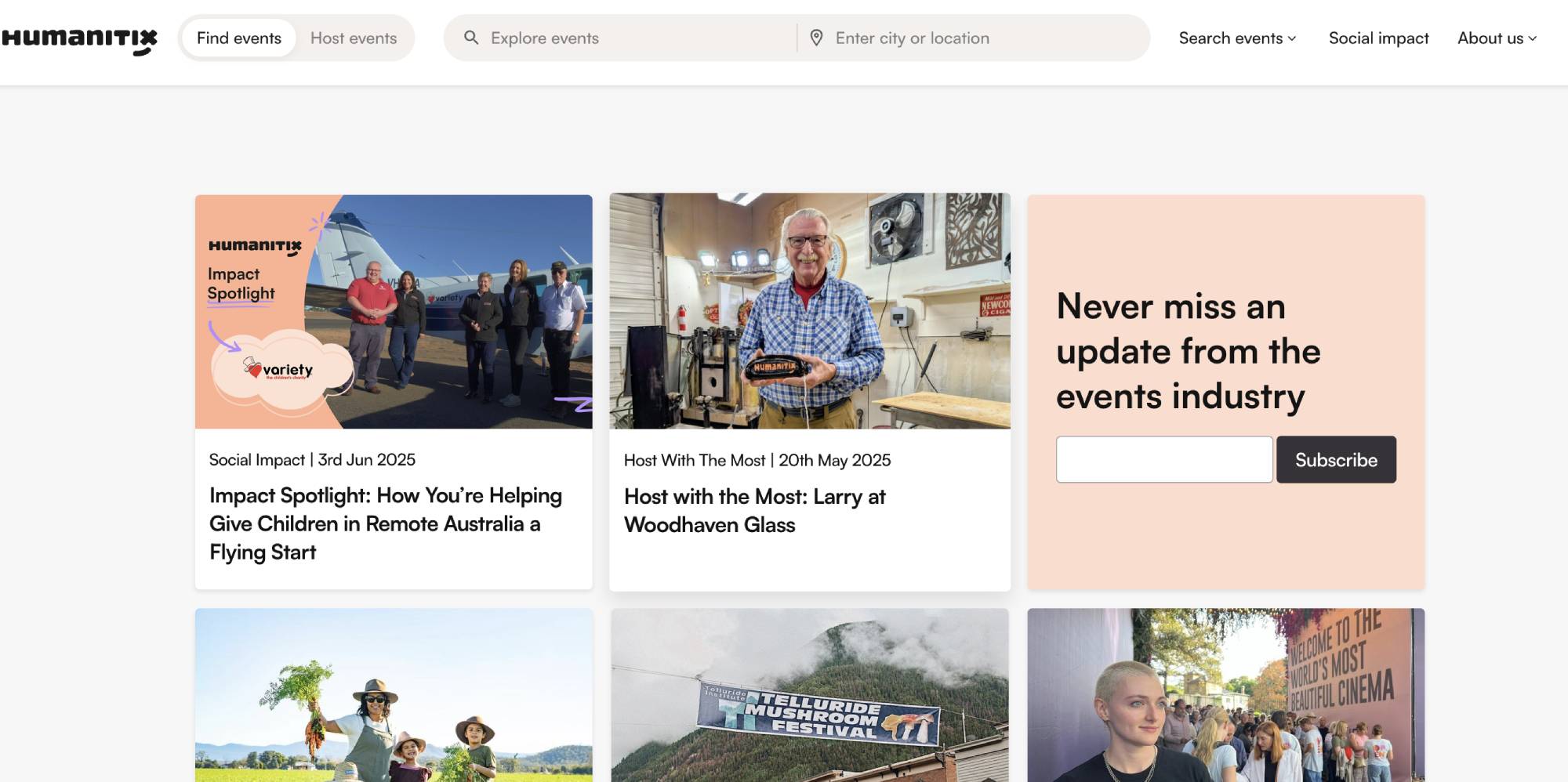
It’s also one of the simplest ways to build long-term relationships. You’re not just sharing updates; you’re keeping the conversation going.
Add a subscribe form somewhere easy to spot; at the end of your posts, in the sidebar, or as a gentle pop-up; and let readers opt in when they’re ready.
It’s small, it’s simple, and it’s one of the most effective tools in your content toolbox.

Easy to find social sharing buttons
When someone enjoys your blog post, don’t make them jump through hoops to share it. A simple set of social sharing buttons; tucked neatly at the top or bottom of each post makes it easy for readers to spread the word with a single click.
It’s one of those small touches that can help promote your blog posts, and quietly expand your reach. Each time someone shares your content, it lands in front of new eyes; friends, colleagues, or followers who might never have come across your site otherwise. That kind of word-of-mouth, even in digital form, is gold.
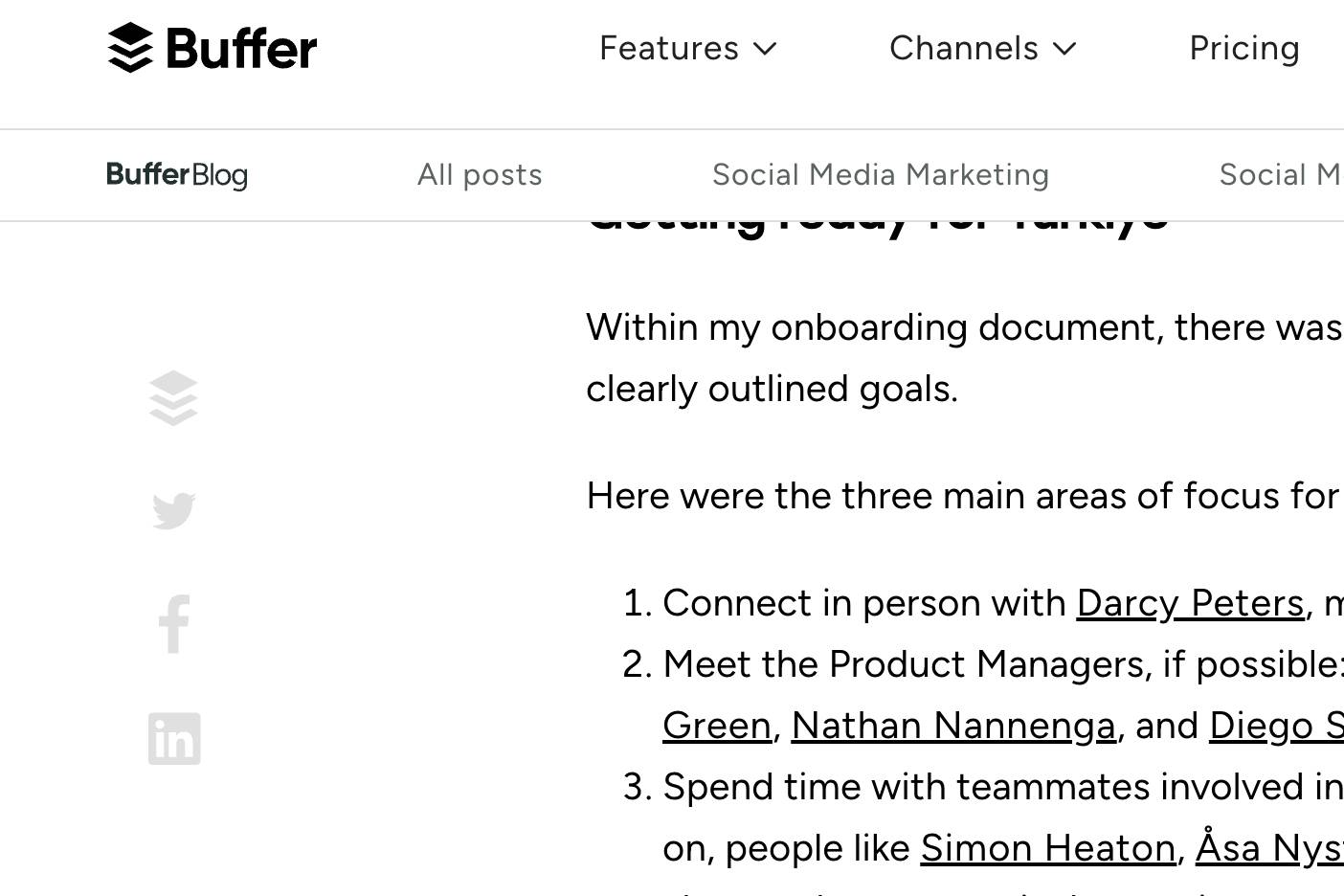
The key is to keep it unobtrusive but visible. Choose platforms that make sense for your audience (LinkedIn, Facebook, Instagram; wherever your crowd hangs out), and make sure the buttons don’t interrupt the reading flow. It’s all about letting readers amplify your message without leaving the moment.
At the end of the day, you’ve put time and care into your content. A social share button is just an open invitation for others to pass it on.

Regularly refreshed existing posts
Writing new content is important; but updating your older blog posts up to date is just as essential. As your industry evolves or your business changes, posts that were once spot-on can start to feel a bit outdated. That’s where a simple refresh can go a long way.
Whether it’s updating stats, swapping in newer examples, or tightening up the wording, a quick review every few months helps your posts stay useful and accurate. It also sends good signals to search engines, showing that your content is being cared for rather than left to go stale.
You don’t need to overhaul everything; just focus on your most-visited pages or posts tied to evergreen topics.
Add a note at the top if something major has changed or if readers should check out a newer post for fresh context. Small touches like that build trust and show your readers that you’re paying attention.

Conclusion
A blog isn’t built overnight; but with the right elements of a successful business blog in place, it becomes one of the most valuable parts of your content toolkit.
From clear voice and smart structure to steady publishing and small touches like social buttons or an email signup, each piece plays a role in how your blog performs; and how your audience experiences your brand.
To recap, those 14 elements we discussed again, are;
- Clear brand voice and tone
- Defined audience and buyer personas
- Strategic keyword integration
- Value-packed content with clear takeaways
- Compelling headlines and meta descriptions
- Internal and external linking strategy
- Strong visual elements
- Clear calls-to-action (CTAs)
- Optimised for mobile and readability
- Regular content updates and publishing calendar
- An RSS feed
- An email subscribe form
- Easy to find social sharing buttons
- Regularly refreshed existing posts
Use this guide as a baseline, not a blueprint. The details may shift depending on your industry, your goals, or even the quirks of your customer base. But the core idea stays the same: show up consistently, say something useful, and make it easy for people to stick around.
And if your blog’s been collecting cobwebs or limping along post-by-post, now’s a good time to pause, regroup, and build it into something that works; not just for SEO, but for the people reading it.








